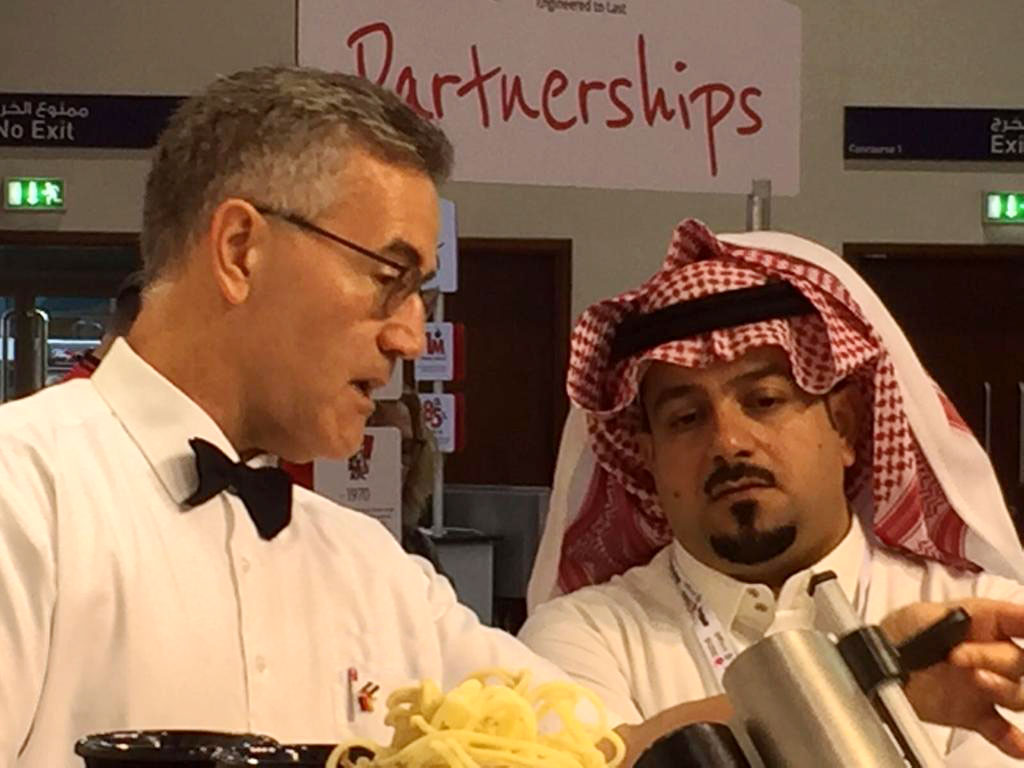Anyone who has participated in trade shows as a responsible person or even just as a trade show visitor knows: A trade show is a very effective and powerful tool. However, it is also complex, expensive and requires a great deal of manpower. All parties involved have much hope for success. It is all about good and high-quality trade show contacts. New business for more sales with new customers should be initiated or even concluded on site. Long-standing relationships with important existing customers should be maintained. Or the company simply wants to achieve greater awareness among its intended target groups in a specific (global) region. If the results are poor, frustration increases. Here are 7 reasons you should consider when organizing your next trade show.

Most companies do not have a person in charge of trade shows. In many companies, the person whose specialist area or regional territory the trade show falls under, must also organize the trade show – regardless of whether the respective colleagues are actual experts in preparing or holding a trade show. These employees often have little time – in addition to their normal day-to-day business – to thoroughly prepare and tackle the trade show. As a result, everything usually starts too late with poor results. The internal trade show planning starts too late, all invitations are sent out too late, the trade show transport is inefficient, the trade show starts chaotically and ends below expectations.
Identify an employee in the company who is talented and organized, enjoys doing this, and is given an appropriate time frame for the trade shows. If necessary, provide targeted training. Clear responsibilities, professional processes and structures help enormously with regular planning and implementation of trade shows. This provides management and everyone involved a with a sense of security – and increases the likelihood there will be a really successful trade show that is worth the investment!
Trade shows require a great deal of time and effort. There are countless details to organize. This effort is usually underestimated already in terms of quantity alone. In practice, it happens that no one can or wants to take on the many time-consuming “little things” – be it just telephone calls, separate mailings or coordination tasks with service providers. This is hardly surprising: After all, everyone still has their “normal tasks” to fulfill that cost time and effort and against which the employees involved are measured.
A trade show requires the backing of management. The time required for a trade show is immense – and will be at the expense of day-to-day business. This must be seen and actively affirmed by management. In addition, professional trade show planning provides everyone involved with greater transparency to better balance day-to-day business and trade show business.
Often people just decide, yes, they go to the trade show without being clear about the purpose of the trade show. If the company thinks it wants not only to present but also to sell its products and realizes during the trade show that this is not allowed by the organizer, the trade show was for nothing. The costs are high, and so is the subsequent loss.
Discuss your goals clearly: Do you want to sell – do you want to make contacts – do you want to show innovations? And make sure the show organizer provides for it.
Stand employees are at the trade show wondering: “Why doesn’t anyone visit us, or why is the number of visitors so sparse?” By chance, one or the other visitor comes to your stand and says: “Oh, I didn’t know you were at the trade show too!” In fact, it was omitted to send out invitations, to inform customers, to create an e-mail signature mentioning your participation in the trade show, etc.
Customers and interested parties must be informed about your participation in the trade show early enough. There are various ways to do this.

It is often the case that trade show employees have not been trained at all. Moreover, they do not know the exact reasons why they are at the trade show. The booth staff cannot explain the products in detail and are overwhelmed. The trade show employees “must” go to the trade show, but “actually” are not very enthusiastic – and this shows via their posture. Visitors receive little attention– or employees check their e-mails and surf the internet with their cell phones. Anyone who has regularly attended trade shows will surely have observed this, and shaken their head at how time, money and potential for customer relationships are just thrown out the window. In addition, such behavior massively strains the image of the company!
Highly trained, motivated employees who are eager to meet customers are indispensable and an important part for the trade show to be successful. Trade shows are physically, emotionally and mentally demanding. Trade show employees need to be fit and healthy – and should have fun doing their job.
Often much time is lost with supposedly interested visitors, while an excellent contact cannot be attracted. There is a lack of understanding about how to distinguish so-called “small talk” visitors from people who are actually interested. Or the booth employees are not astute closers. This results in long, unnecessary chats.
The trade show employees must be able to quickly recognize who is really interested and worth their attention.
Unfortunately, it’s typical that trade show follow-up is rarely done. After the trade show, employees must catch up with normal day-to-day business. Leaving the follow-up communications completely omitted. Yet, many years of practice show: Even shortly after the trade show, an obviously high-quality contact has lost interest if not followed up.
Do your after-trade-show business promptly following the trade show. The preparation for follow-up after the trade show can already start and be implemented before and during the trade show.

Sign up for my free trade show strategy session, where we will discuss your challenge and find a solution. Stop by my Facebook group “Trade show Lounge”. We can exactly address these problems and find a solution.
With warm regards,
René Wyler
Your expert for trade show success